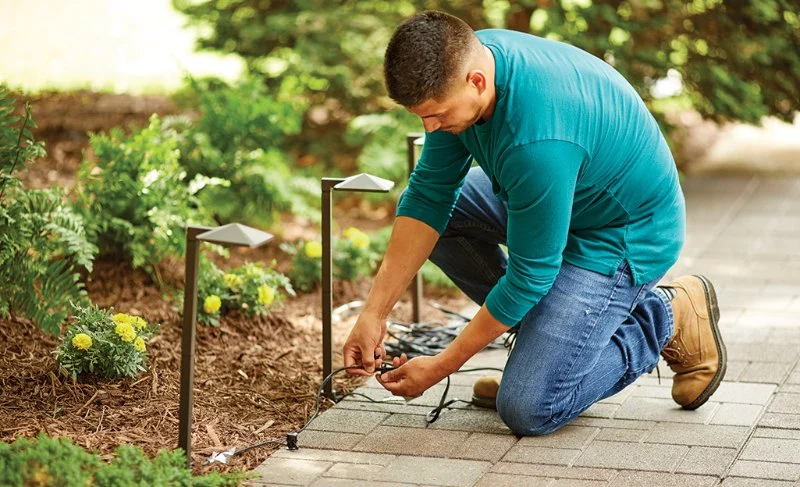
- 1. Why Choose Low-Voltage Lighting for Your Garden?
- 2. Materials You Need for Low-Voltage Lighting Installation
- 3. Step-by-Step Guide to Installing Low-Voltage Lighting
- 4. Common Mistakes to Avoid When Installing Garden Lights
- 5. Tips for Maintaining Your Low-Voltage Garden Lighting 6. Conclusion: Transform Your Garden with Low-Voltage Lighting
1. Why Choose Low-Voltage Lighting for Your Garden?
Low-voltage lighting is a fantastic way to add ambiance, security, and functionality to your garden. It’s safe to install, energy-efficient, and can dramatically enhance the appearance of your outdoor space. With low-voltage lighting, you can illuminate pathways, highlight garden features, or create a relaxing atmosphere for evening gatherings. But why exactly should you choose low-voltage lights?
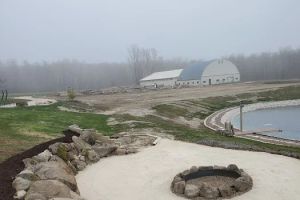
JAWS Lawn and Landscaping
Sheboygan FallsSheboygan CountyWisconsin
W3873 Co Rd J, Sheboygan Falls, WI 53085, USA
1.1. Safety and Energy Efficiency
One of the major benefits of low-voltage lighting is safety. Since the voltage is lower than regular electrical systems, the risk of electric shock is greatly reduced, making it a safer option for outdoor environments. Additionally, low-voltage lights are more energy-efficient, meaning you can enjoy beautiful lighting without worrying about a high electricity bill.

Living Colors Landscape Management
IndianapolisMarion CountyIndiana
3229 N Lesley Ave, Indianapolis, IN 46218, USA
1.2. Easy to Install and Customize
Low-voltage lighting systems are relatively easy to install, even for beginners. They don't require complex wiring or expensive equipment, and many systems are designed for DIY installation. Plus, these systems are highly customizable, so you can design the lighting layout to suit your specific garden needs.
2. Materials You Need for Low-Voltage Lighting Installation
Before starting your garden lighting project, it's essential to gather the right materials. Here's a list of items you’ll need:
2.1. Low-Voltage Light Fixtures
Choose the right type of lights for your garden. You can select from path lights, spotlights, floodlights, or decorative fixtures. Consider the aesthetic you want to create and the areas you want to illuminate.
2.2. Transformer
A transformer is necessary to convert standard 120V household voltage to the lower voltage required for your outdoor lighting. Be sure to select a transformer with enough wattage to support the total number of lights you plan to install.
2.3. Wiring and Connectors
You’ll need low-voltage wiring to connect the lights to the transformer. Make sure to use high-quality, weather-resistant wiring. You’ll also need connectors to join the wires securely and ensure they’re waterproof.
2.4. Timer or Photocell Sensor (Optional)
A timer or photocell sensor can automatically turn your lights on at dusk and off at dawn, making the system more efficient and hands-off. This can be a convenient addition to your lighting setup.
3. Step-by-Step Guide to Installing Low-Voltage Lighting
Installing low-voltage lighting in your garden can be a simple and enjoyable DIY project. Here’s a step-by-step guide to help you through the process:
3.1. Plan Your Lighting Layout
Before starting the installation, plan where you want to place the lights. Consider highlighting features such as trees, plants, statues, or walkways. Sketch a rough layout to help visualize how the lights will be arranged and to determine the length of wiring needed.
3.2. Position the Transformer
Install the transformer in a dry, weather-protected area near a power source. Make sure it’s within reach of the wiring, and follow the manufacturer's instructions for mounting and setup.
3.3. Lay the Wiring
Run the low-voltage wiring from the transformer to each light location. Use a shovel to dig shallow trenches to bury the wiring, ensuring it’s safe and out of the way. If you need to run wires over pathways or driveways, use wire cover to protect the wiring from damage.
3.4. Install the Light Fixtures
Place the light fixtures where you want them, securing them according to the instructions. You may need to use stakes or anchors to keep the lights in place. Connect the wiring to the light fixtures using the appropriate connectors.
3.5. Test the System
Once everything is connected, plug in the transformer and test the lights to ensure they’re working correctly. Adjust the positioning of the lights if needed to achieve the desired effect.
4. Common Mistakes to Avoid When Installing Garden Lights
While installing low-voltage lighting is relatively simple, there are a few common mistakes to watch out for:
4.1. Using Insufficient Power
Ensure your transformer has enough wattage to handle the total number of lights you plan to install. Using a transformer that’s too small can cause the lights to flicker or not work at all.
4.2. Incorrect Placement of Lights
Don’t place lights in areas where they’ll be blocked by plants or objects. Also, avoid placing lights too close to one another, as this can create harsh lighting rather than soft, ambient illumination.
4.3. Not Protecting the Wiring
Ensure the wiring is properly protected and buried to prevent damage. Exposed wiring can lead to electrical hazards or malfunctioning lights.
5. Tips for Maintaining Your Low-Voltage Garden Lighting
Proper maintenance is key to keeping your low-voltage lighting system functioning smoothly. Here are some maintenance tips:
5.1. Regular Cleaning
Dust and dirt can accumulate on your light fixtures, reducing their brightness. Clean the lenses of your lights regularly with a soft cloth to keep them shining brightly. Avoid harsh chemicals that could damage the finish.
5.2. Check for Damage
Inspect your lighting system periodically for any signs of wear or damage, such as frayed wires or broken light fixtures. Addressing these issues promptly will help extend the life of your system.
5.3. Replace Burned-Out Bulbs
Replace any burned-out bulbs promptly to ensure your garden lighting continues to work as intended. Use energy-efficient LED bulbs for longer-lasting and more cost-effective lighting.
6. Conclusion: Transform Your Garden with Low-Voltage Lighting
Installing low-voltage lighting is a simple yet effective way to enhance your garden’s beauty, functionality, and safety. By following this guide, you can create a stunning outdoor space that’s perfect for evening relaxation and entertaining. Whether you’re highlighting your favorite plants or adding ambiance to your patio, low-voltage lighting offers endless possibilities.
For the best products and expert advice on creating your perfect garden lighting setup, visit Beautiful Landscapes. We offer a wide selection of lighting solutions and accessories to help you transform your outdoor space.

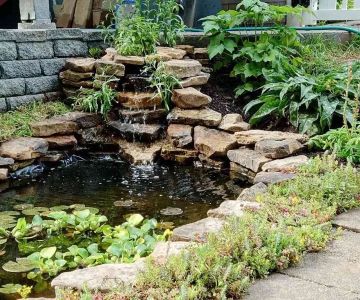



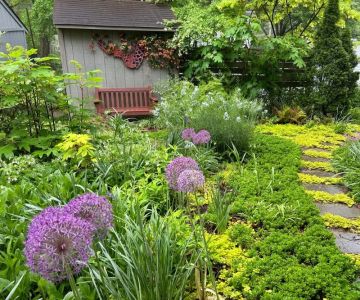
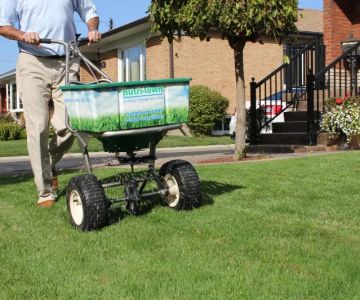
 Boyd's Lawn Care0.0 (0 reviews)
Boyd's Lawn Care0.0 (0 reviews) Deckers Services, L.L.C.4.0 (12 reviews)
Deckers Services, L.L.C.4.0 (12 reviews) Rich Designs4.0 (4 reviews)
Rich Designs4.0 (4 reviews) L&S Restoration LLC5.0 (1 reviews)
L&S Restoration LLC5.0 (1 reviews) Lovely Lawn Care Co.4.0 (5 reviews)
Lovely Lawn Care Co.4.0 (5 reviews) De Motte Decorative Stone Inc4.0 (19 reviews)
De Motte Decorative Stone Inc4.0 (19 reviews) How to Landscape a Front Yard for Maximum Curb Appeal: Expert Tips and Ideas
How to Landscape a Front Yard for Maximum Curb Appeal: Expert Tips and Ideas How to Attract Birds & Butterflies to Your Landscape
How to Attract Birds & Butterflies to Your Landscape How to Design With Movement: Plants That Sway Gracefully in Your Garden
How to Design With Movement: Plants That Sway Gracefully in Your Garden How to Use Garden Art to Add Personality to Your Outdoor Space
How to Use Garden Art to Add Personality to Your Outdoor Space How to Incorporate Steps & Elevation Into Design for a Beautiful Outdoor Space
How to Incorporate Steps & Elevation Into Design for a Beautiful Outdoor Space How to Install Low-Voltage Lighting in Your Garden: A Step-by-Step Guide
How to Install Low-Voltage Lighting in Your Garden: A Step-by-Step Guide